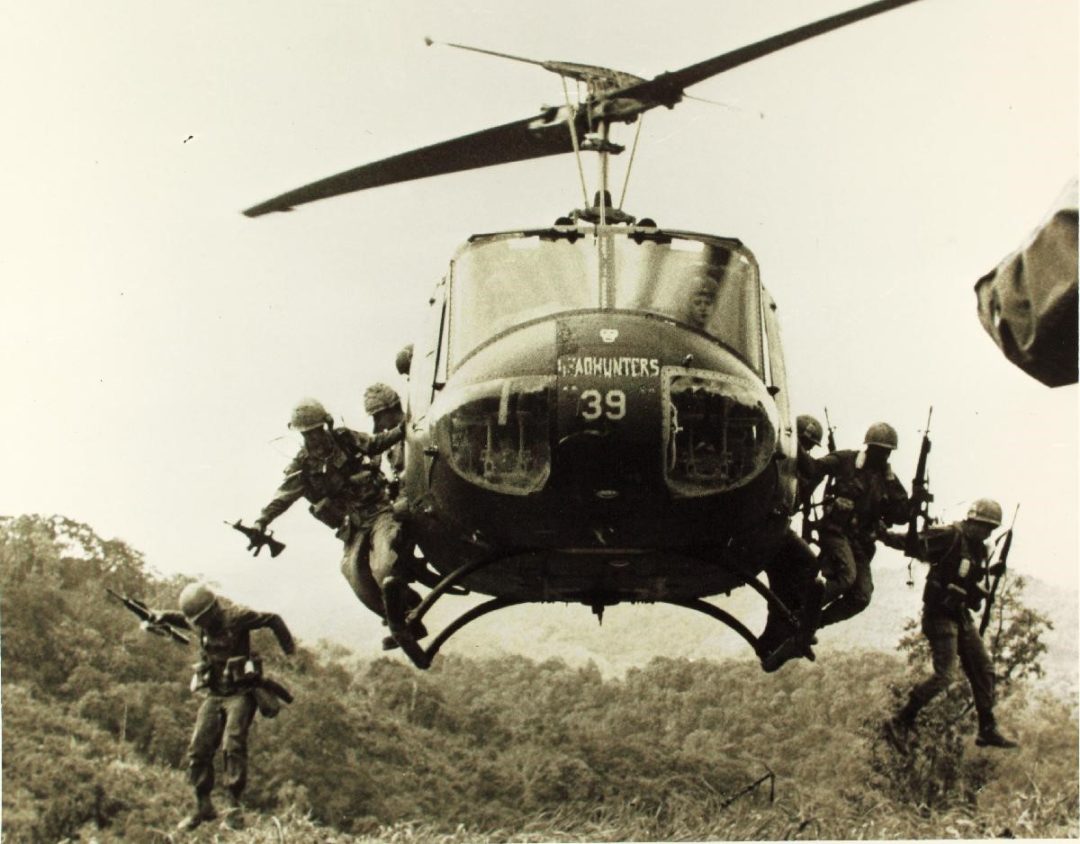HKP 3 – The Vietnam veteran
When you hear the word ”helicopter” there is a good chance,especially if you are older than 30, that you picture a Bell 204. Of course you may never have heard of just the Bell 204, but instead know about the UH-1 ”Huey” or the Swedish Helicopter type 3 (HKP 3).
Hence for many people a Bell 204 is still today their idea of what a helicopter is and what it looks like. Partly because this type has been in service for a very long time, both in military and civilian use, partly because this is the helicopter of which the greatest number have been built, namely over 16,000 of them. They have also been manufactured under licence by the Italian Agusta company as the Agusta-Bell 204.
The history of the type is long, very eventful and it has been ”where it happened” right up to the 1990s.
The United States Army and the ”Huey”
After the Korean War, during which helicopters made a breakthrough as an important contribution to the modern military toolbox, the US Army realised that it needed a helicopter with a greater load capacity than the Bell 47 but which did not need to be as large as the Piasecki H-21. What was wanted was a medium sized helicopter with a gas turbine engine. The Bell company, which had constructed the revolutionary Bell 47, took on the challenge and produced in 1955 the ”Model 204”. The USA Army was satisfied and Bell successfully negotiated to have the first machine delivered in 1958. It received the US Army designation ”UH-1 Iroquois”. The civilian market had to wait until 1961.
The UH-1 was a stable machine that could lift 8–9 combat-equipped soldiers; a complete platoon, or transport several wounded men on stretchers, or else a load of up to 1,900 kg.
From the start the helicopter was designated the HU-1, which led to its nickname ”Huey”. When in 1962 the US Army changed the official designation to ”UH-1 Iroquois” the old nickname of ”Huey” remained, and most people even today still refer to the Bell 204 as the ”Huey”.
All versions of the Bell 204 have a large two-bladed main rotor, which results in a very characteristic sound, a rhythmic soft chopping, untike the whirring from helicopters with more and smaller main rotor blades. This is a sound that is often associated with a sense of relief and hope, along with fear and terror, depending on the circumstances.
The UH-1 was not the first helicopter to be armed. Nor was it the first helicopter to be equipped to directly attack targets on the ground in its role as a ”gunship” or attack helicopter. But it was the UH-1 that became the role model for the helicopter as a fighting machine to most people. The reason for this was one of the Cold War’s most traumatic and bloody conflicts, the Vietnam War.

US Army soldiers perform a rather daring landing during the Vietnam War. Source: Wikimedia commons
